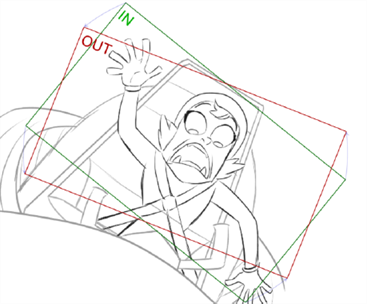T-SBCON-003-005
Camera moves are used to direct the audience to the important part of your scene. You can hide elements that you might not want them to know about right away. It can also give a whole new perspective on a scene or a situation by revealing an important part of your scene.
In a traditionally laid out or hand-drawn storyboard, a camera movement is indicated by camera frames A and B. In Storyboard Pro, you can export your storyboard as a PDF, in which case the camera movement is indicated as IN and OUT. In an animatic (or movie) export, the camera movements will appear the way they would in the final production.
Staging the Action
Staging is a term taken from theatre. It refers to placing the characters at the ideal position on the stage so the story events are clear. In animation and storyboarding, staging refers to trying out different arrangements on paper to find the best presentation for a scene, so it is clear and dynamic.
A great way to stage a scene is to create a simple illustration like the one shown below. An overview of the whole set will allow you do have a clear idea of what you should see in the panels you will later draw in your storyboard.
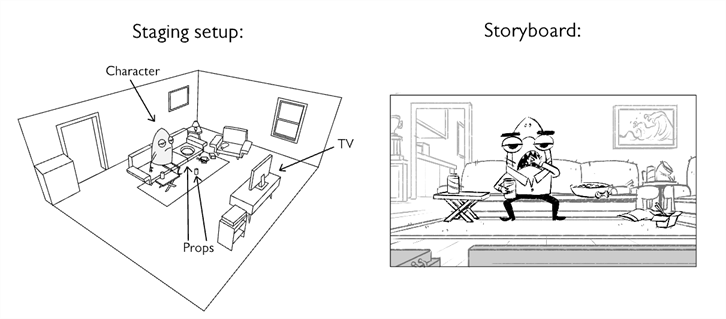
Below is a list of commonly used camera movements that you can find in 2D animation.
Zoom In
A zoom in occurs when the camera moves from a wider shot to a closer shot, such as from a medium shot to a close-up. Depending on the speed of the camera move, it can either bring a lot of action to a scene or slowly direct the audience to a specific detail in the scene.
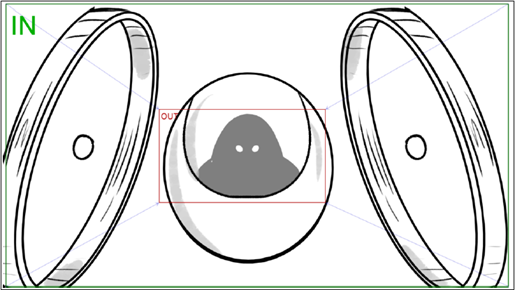
Zoom Out
A zoom out is the opposite of a zoom in. The camera moves from a closer shot to a wider shot, such as moving from a close-up to a medium shot. It can reveal parts of the shot that were previously hidden, or give more space to the action in the scene. This type of move can be very fast or slow.
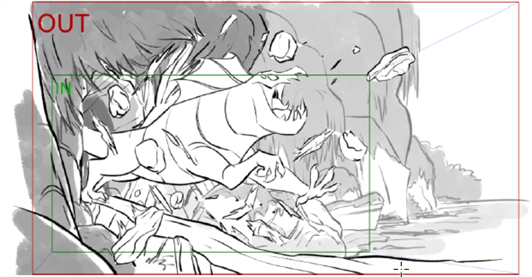
Pan
A pan is the horizontal, vertical, or diagonal movement of the camera. The pan is often used so your audience can experience a wide panorama that doesn't fit in the camera frame, but it can also be used to follow the main action across a large area. A pan can also be coupled with a zoom movement.
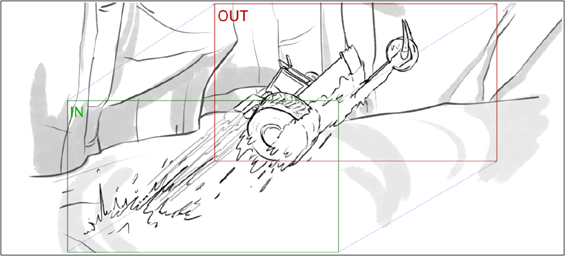
Shake
A camera shake is a rapid movement or rotation of the camera that emulates turbulence. This is the kind of camera movement you might see during an earthquake or car crash. It is often done with the character in shot, or from the character's point of view. A camera shake includes the viewer in the chaos of the scene.
